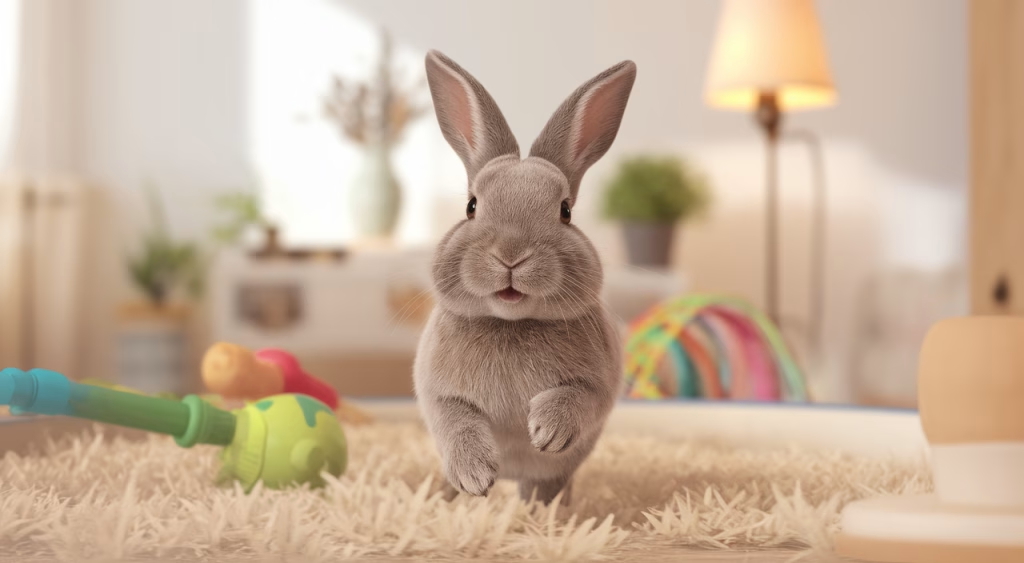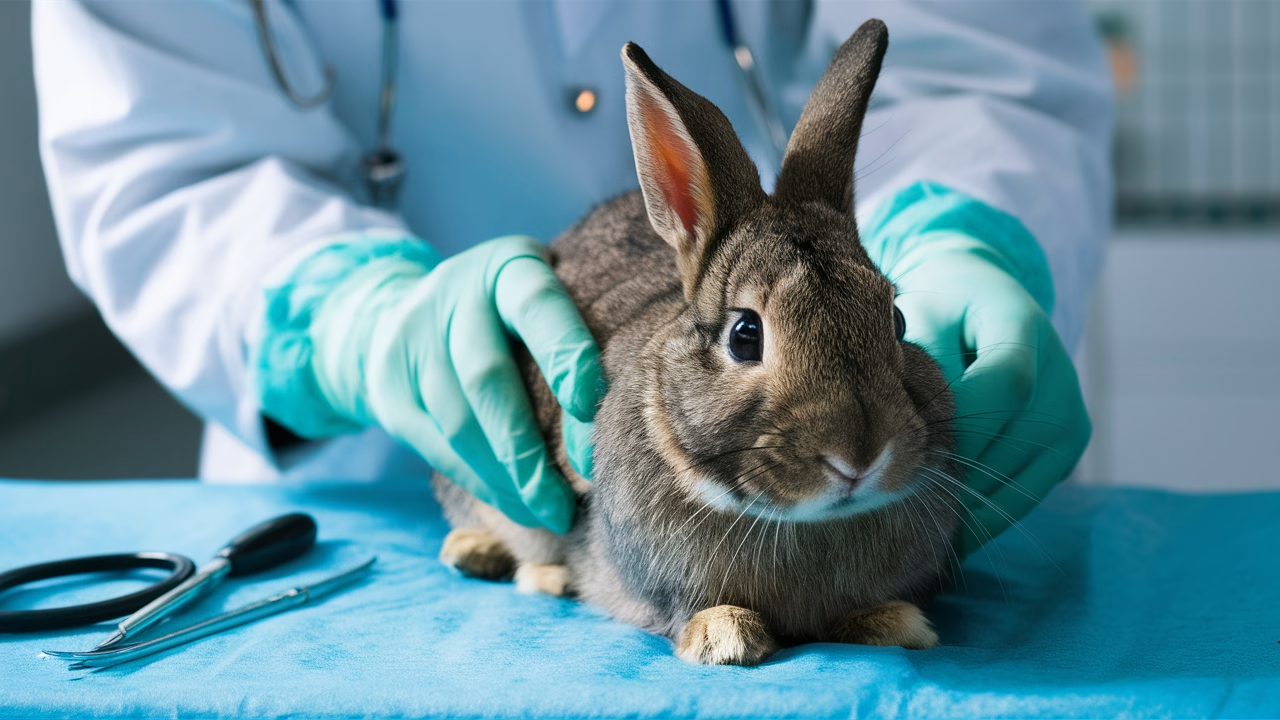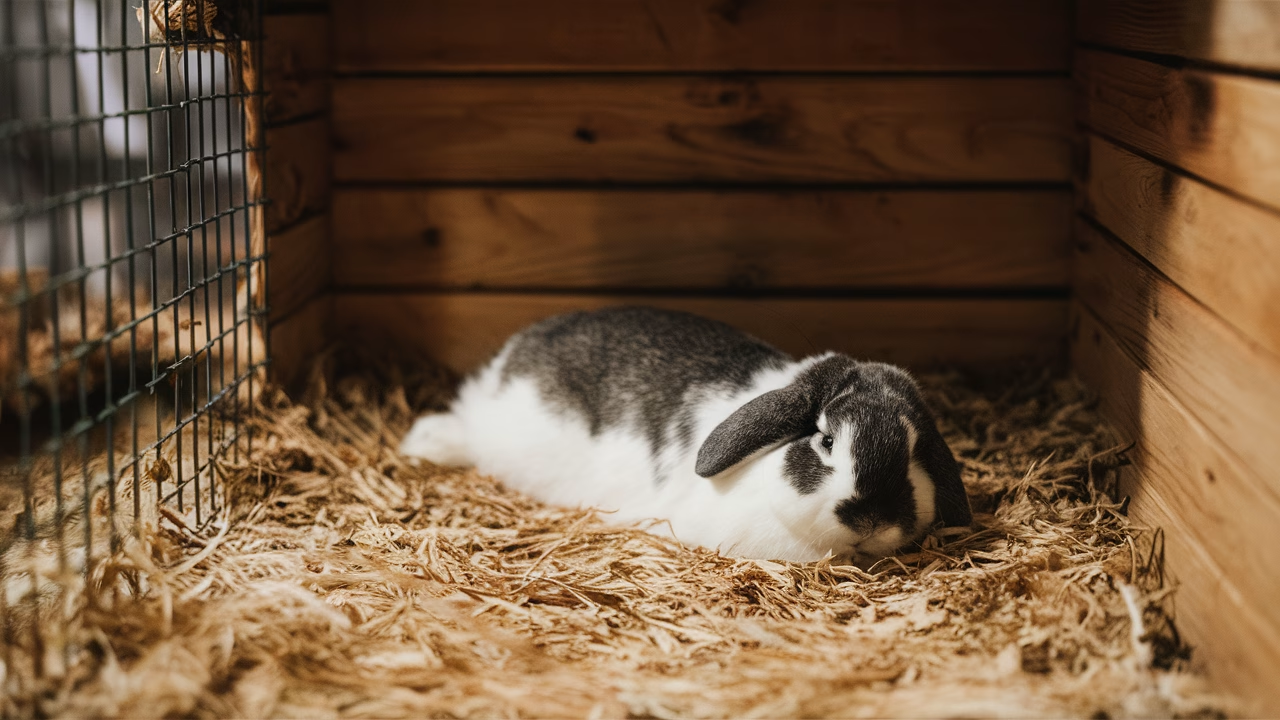What Are the Common Mistakes Rabbit Owners Should Avoid?
New rabbit owners often underestimate the complexity of proper rabbit care. From mishandling to improper diet, these rabbit owner mistakes can compromise your bunny’s health, happiness, and even survival. Understanding these pitfalls helps you become the rabbit parent your bunny deserves.
- ✔ Rabbit Spaying and Neutering: Prevents aggression and reduces health risks like reproductive cancers
- ✔ Healthy Rabbit Diet: A hay-based diet supports digestion and dental health
- ✔ Exercise for Rabbits: Prevents obesity and behavioral problems
- ✔ Mental Stimulation: Toys and puzzles prevent boredom and stress
- ✔ Safe Rabbit Bedding: Avoids respiratory issues; use paper-based or aspen
- ✔ Regular Vet Visits: Helps catch health issues early
- ✔ Proper Handling: Reduces fear and injury
- ✔ Bunny-Proofing: Prevents chewing hazards and keeps your rabbit safe
- ✔ Rabbit Dental Care: Crucial because rabbit teeth grow continuously
- ✔ Informed Ownership: Each rabbit is unique—know their needs
Let’s break these down in detail to help you become a trustworthy, confident rabbit caregiver and avoid these critical rabbit owner mistakes.
Spaying and Neutering: Ensuring Your Rabbit’s Health and Well-being
If you haven’t yet altered your rabbit, consider this your wake-up call. **Rabbit spaying and neutering** isn’t just about preventing surprise babies—it significantly impacts both behavior and health. A non-neutered rabbit may become territorial, aggressive, and even depressed, making this one of the most crucial rabbit care decisions you’ll make.
Health Risks of Unaltered Rabbits
| Gender | Common Health Risk | % Chance by Age 4 |
|---|---|---|
| Female (Unspayed) | Uterine Cancer | 50-80% |
| Male (Unneutered) | Testicular Cancer | Moderate |
Behavioral Benefits: Spayed and neutered rabbits are generally calmer and easier to litter train, making them more suitable as indoor companions. When considering rabbit spaying and neutering, always consult with an exotic animal vet experienced in rabbit surgeries to ensure safety and proper care.
Proper Diet: The Key to a Healthy Digestive System
Rabbits are hindgut fermenters with very delicate digestive systems. You might think “a few extra pellets won’t hurt,” but an improper **healthy rabbit diet** can lead to GI stasis—a deadly slowdown of the digestive tract that’s completely preventable with proper nutrition.
Breaking Down a Balanced Rabbit Diet
| Food Type | Percent of Daily Intake | Notes |
|---|---|---|
| Timothy Hay | 80% | Digestive fiber and dental abrasion |
| Leafy Greens | 15% | Kale, cilantro, romaine; rotate often |
| Pellets | 5% | Only 1 tbsp per 2 lbs of body weight |
| Fruits/Treats | <1% | Use sparingly for training |
Remember—carrots and sugary fruits are like candy to bunnies. A healthy rabbit diet uses these as occasional treats, not daily fixtures, to maintain optimal digestive health.
Exercise Needs: Keeping Your Rabbit Happy and Active
Imagine never being able to stretch your legs—you’d go crazy, right? Rabbits feel the same way. A pent-up bunny often becomes destructive, chewing everything in sight. Proper **exercise for rabbits** requires at least 3-4 hours of space to roam freely each day.
Crafting a Rabbit Exercise Routine
| Activity | Time Needed Daily | Benefit |
|---|---|---|
| Free Roam Hopping | 2-3 hours | Cardio & stimulation |
| Tunnel Exploration | 15 minutes | Mental enrichment |
| Interactive Play | 30 mins+ | Bonding & exercise |
Why exercise for rabbits matters: lack of movement causes obesity and behavioral issues—not to mention depression. Provide ramps, safe tunnels, and climbable platforms for physical enrichment that keeps your bunny healthy and engaged.
Dental Health: Preventing Dental Problems in Your Rabbit
A rabbit’s teeth grow continuously throughout life, making **rabbit dental care** absolutely essential. Improper wear leads to sharp points and painful abscesses. What’s worse, once dental issues start, they cascade into eating problems, weight loss, and serious infections.
Essential Rabbit Dental Care Tips
- Provide unlimited hay—the #1 way to grind down molars naturally
- Offer safe wooden chews or untreated willow branches
- Watch for drooling, weight loss, or picky eating
- Schedule regular dental checkups with your rabbit-savvy vet
If you suspect dental trouble, see a vet immediately. Preventative rabbit dental care is cheaper—and kinder—than emergency treatment.
Choosing the Right Bedding: Impact on Your Rabbit’s Health
Don’t just grab the cheapest shavings at your local pet store. The wrong bedding choice isn’t just uncomfortable—it can be downright dangerous to your rabbit’s respiratory system.
Safe Bedding Choices for Rabbits
| Bedding Type | Safe for Rabbits? | Notes |
|---|---|---|
| Pine/Cedar Shavings | No | Can release harmful aromatic oils |
| Paper-Based Bedding | Yes | Absorbent and dust-free |
| Aspen Shavings | Yes | Natural and safe alternative |
| Fleece Liners | Yes, if cleaned often | Comfortable but requires frequent laundry |
**Safe rabbit bedding** should be free from scents, perfumes, and wood oils. Always line litterboxes with absorbent and dust-free material to avoid respiratory issues and maintain a healthy environment.
Bunny-Proofing Your Home: Creating a Safe Environment
Bunnies chew—it’s in their DNA. Unfortunately, electric cords, drywall, and furniture all look like tasty toys to your rabbit. Without proper bunny-proofing, you’re inviting injury and expensive damage.
Essential Bunny-Proofing Tips
- Cable protectors for all exposed cords
- Sturdy bunny gates to block off danger zones
- Chew toys and cardboard tunnels as safe distractions
- Rugs or mats to protect carpets and give traction
Effective bunny-proofing isn’t just about protecting your belongings—it’s about ensuring your rabbit lives a long and injury-free life in a safe environment.
Veterinary Care: The Importance of Regular Checkups
Unlike cats or dogs, rabbits instinctively hide their pain. Their survival instincts tell them: conceal weakness or risk being prey. That’s why regular **rabbit vet visits** must be proactive, not reactive—waiting until symptoms appear often means it’s too late.
Recommended Vet Checkup Schedule
| Life Stage | Visit Frequency | Purpose |
|---|---|---|
| Young (0–3 years) | Annual | Baseline exams, vaccinations |
| Adult (3–6 years) | Annual w/ dental exam | Preventative care |
| Senior (7+ years) | Every 6 months | Monitor organ health, arthritis |
Always find a rabbit-savvy vet for your routine visits. Not all general veterinarians understand rabbit anatomy or the unique diseases that affect these delicate animals.
Handling Your Rabbit: Building Trust and Avoiding Injury
Ever seen someone pick up a rabbit by its ears? Unfortunately, many people still think this is acceptable—it’s absolutely not. **Proper rabbit handling techniques** prevent broken backs, dislocated limbs, and lifelong fear of humans.
Safe Rabbit Handling Techniques
- Always support the hindquarters—never hold your rabbit “butt-down”
- Keep them close to your body for stability and comfort
- Never scruff or lift by ears—this causes pain and injury
- Use a calm, slow approach to build trust
With practice and proper rabbit handling techniques, your bunny will learn to enjoy cuddles, grooming, and even vet trips without panic or stress.
Mental Stimulation: Keeping Your Rabbit’s Mind Sharp
Bored rabbits become destructive rabbits. **Mental stimulation** is just as crucial as food, water, or shelter for your rabbit’s wellbeing. Without adequate mental enrichment, you’ll see increased chewing, aggression, or even depression in your bunny.
Benefits of Mental Stimulation for Pet Rabbits
- Prevents learned helplessness and chronic stress
- Encourages natural exploration and builds confidence
- Strengthens the bond between you and your rabbit
- Reduces destructive behaviors significantly
Mental stimulation ideas: cardboard mazes, dig boxes filled with shredded paper, foraging toys, supervised mirror play, and regularly rotating hiding spots throughout their space.
Importance of Research: Understanding Your Rabbit’s Specific Needs
Finally, no single article can replace your ongoing commitment to learning. All rabbits have unique personalities, tolerances, and individual quirks. Whether you own a dwarf lop or a Flemish giant, never stop educating yourself about proper rabbit care.
Use reputable books, consult veterinary sources, and connect with experienced rabbit owners. Stay away from outdated forums filled with dangerous myths. **Researching rabbit needs** should start before bringing one home—and continue throughout every year of their life.
Do Porcupines Float? Surprising Swimming Abilities & Quill Secrets Revealed
Frequently Asked Questions
- How often should I clean my rabbit’s enclosure?
Spot-clean daily and do a full cleaning once a week to control odor and bacteria. - Can rabbits be kept outside?
Yes, but only in predator-proof, weather-safe enclosures with daily supervision. - Is litter training possible for indoor rabbits?
Absolutely. Spayed/neutered rabbits adapt quickly to litter training with consistency. - How do I bond two rabbits?
Use neutral ground and gradual introductions to avoid territory fights. - What toys are best for rabbits?
Cardboard tunnels, willow balls, safe wood blocks, and treat puzzles. - Do rabbits get along with other pets?
Some do, but supervision is essential—avoid pairing with predators like dogs or cats unless trained.





